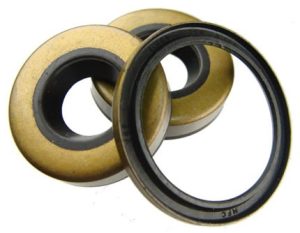
Vulcanized seals offer a superior level of protection against leakage. They are made using a combination of heat, pressure and adhesive, which chemically bond two ends of the base material together.
Whether you’re planning to use them in filter housings, machines or other applications, you may want to choose vulcanized gaskets. They can withstand harsh environments without leaking. While all vulcanized gaskets are made with heat, pressure and adhesive, though, they are available in several different types.
#1) Butt Splice
Butt splice vulcanized seals feature an endless design. Like other types of vulcanized seals, they are spliced into two sections. Butt splice vulcanized seals, though, feature a seamless connection between these two sections. They are used in sealing applications where there’s little or no stress at the splice.
#2) Step Splice
Step splice vulcanized seals are typically preferred for sealing applications that require maximum bonding strength. Also known as an overlap splice, a step splice involves one section overlapping the other section. The adhesive will cover a larger surface area with step splice vulcanized seals, resulting in greater bonding strength. Step splice seals can still deform under pressure, meaning they will protect against leakage. They simply feature a different design than their counterparts, allowing for greater bonding strength.
#3) Corner Splice
Another common type of vulcanized seal is corner splice. As the name suggests, corner splice vulcanized seals are spliced at the corner. Different applications require seals of different shapes. Corner splice vulcanized seals are used in special configurations such as this. They are spliced at the corner, and they are typically recommended for static applications where the bond isn’t under strain.
#4) Bevel Splice
When shopping for vulcanized seals, you may come across bevel splice. Bevel splice vulcanized seals are commonly used as an alternative to butt splice vulcanized seals. If the cross section of a seal doesn’t support a butt splice, a bevel splice may be used, instead. Bevel splice vulcanized seals offer stronger bonding than their butt splice counterparts because the adhesive covers a greater surface area.
#5) Molded Splice
Finally, there are molded splice vulcanized seals. Molding splice vulcanized seals are inexpensive. They cost less to produce than other types of vulcanized seals, resulting in cost-savings benefits for businesses that purchase them. They are made by splicing extruded shapes on the base material. Along with butt splice, step slplice, corner splice and bevel splice, molded splice is a common type of vulcanized seal.
